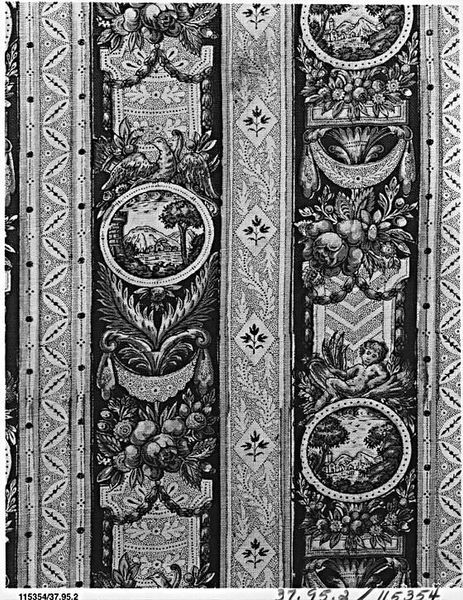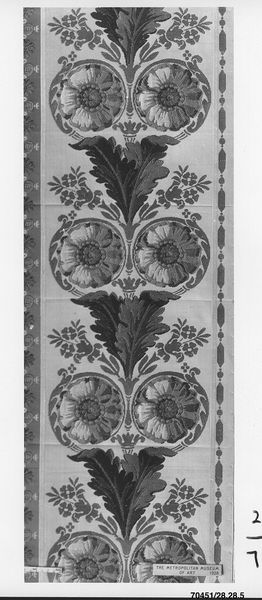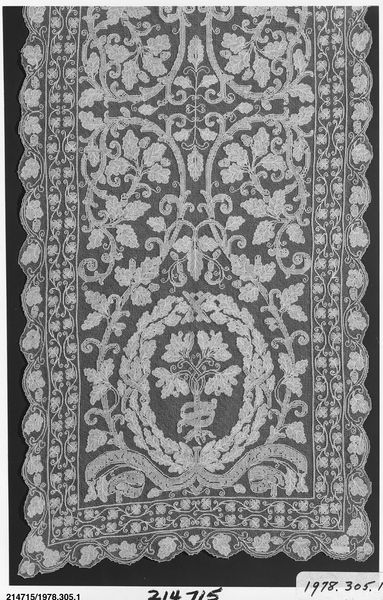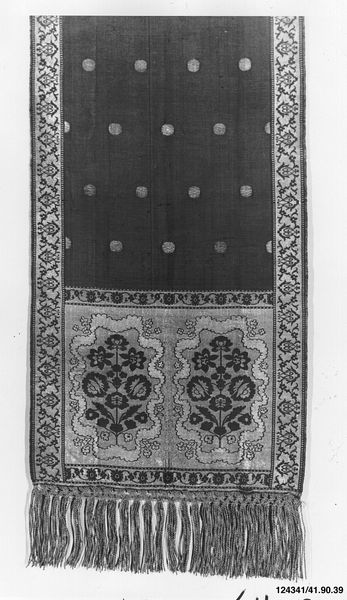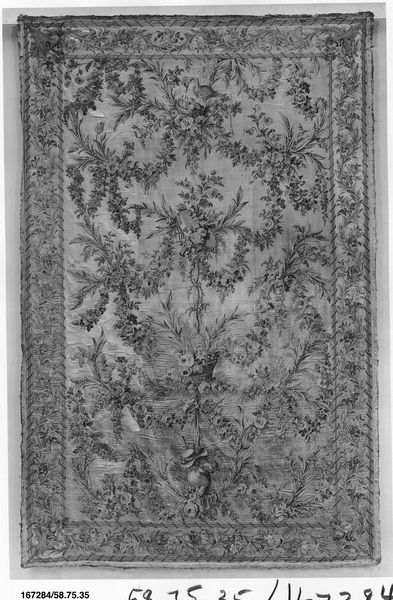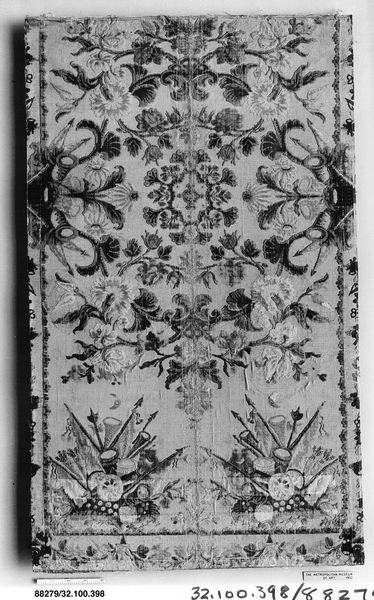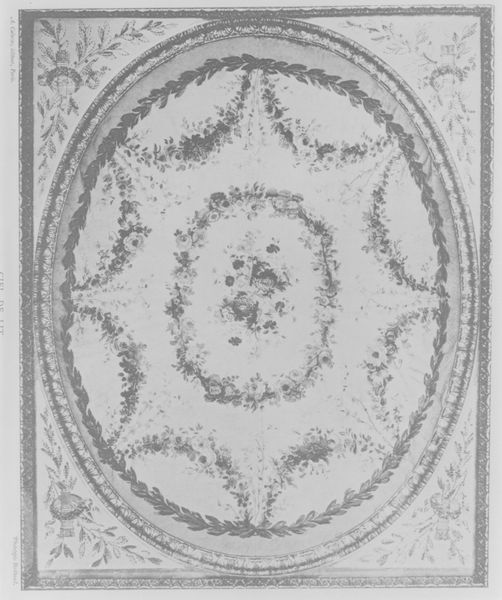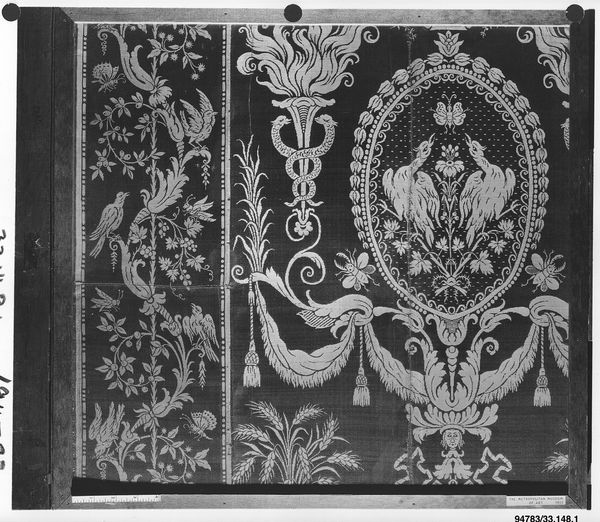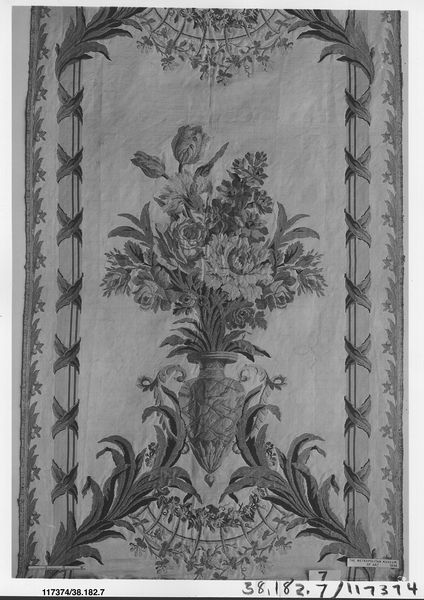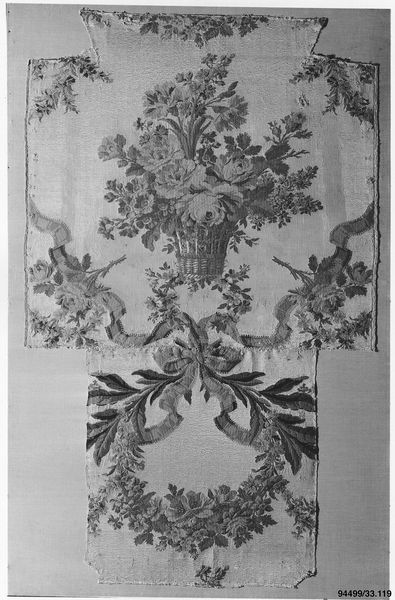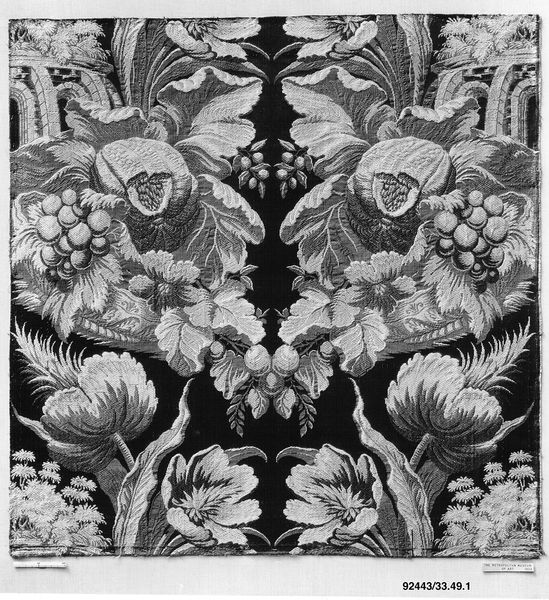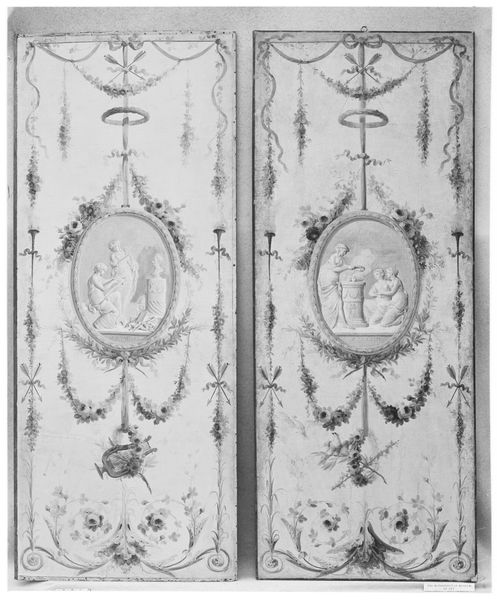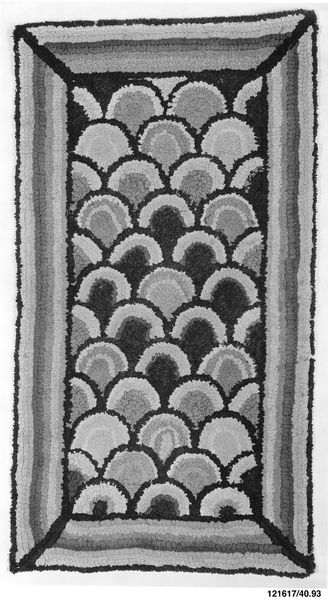
textile
#
carving
#
textile
#
decorative-art
Dimensions: L. 28 x W. 14 1/2 inches (71.1 x 36.8 cm)
Copyright: Public Domain
Editor: This "Border for wall fabric" was crafted in 1813 by Séguin et Cie, currently residing at the Metropolitan Museum of Art. The weaving and textile piece is just beautiful, but it almost feels… oppressively ornate? How do you interpret this work? Curator: It's interesting you find it oppressive. I see it as reflective of its time. Consider the socio-political context of post-revolutionary France. Romanticism was in full swing, a rebellion against Enlightenment rationalism. This fabric isn't just decoration; it's a statement. What kind of statement do you think wall fabric can be? Editor: Well, the intricate details definitely speak to a desire for luxury and refinement, maybe a restoration of grandeur after a period of upheaval? It feels like a very controlled, deliberate kind of beauty. Curator: Precisely. Think about the intended audience – the upper classes, eager to reclaim their status and express it through their surroundings. This border embodies their aspirations. How might its presence shape the space, both literally and figuratively? Editor: I suppose it would create an atmosphere of formality and wealth. Every detail, from the floral wreaths to the stylized ornamentation, reinforces that message of elite status. It would subtly control interactions within the room, wouldn't it? Curator: Exactly. Consider how institutions – the burgeoning textile industry, the aristocratic patrons – shaped not only the creation of the object, but also its power to define social space. What have you gleaned from this close look at pattern and history? Editor: I'm now seeing this textile not just as pretty ornamentation, but also as a reflection of societal structures and ambitions, made tangible. Thanks for bringing to my attention this intersection. Curator: It's been a pleasure. Hopefully it illuminates how seemingly simple objects hold complex stories about power and culture.
Comments
No comments
Be the first to comment and join the conversation on the ultimate creative platform.
